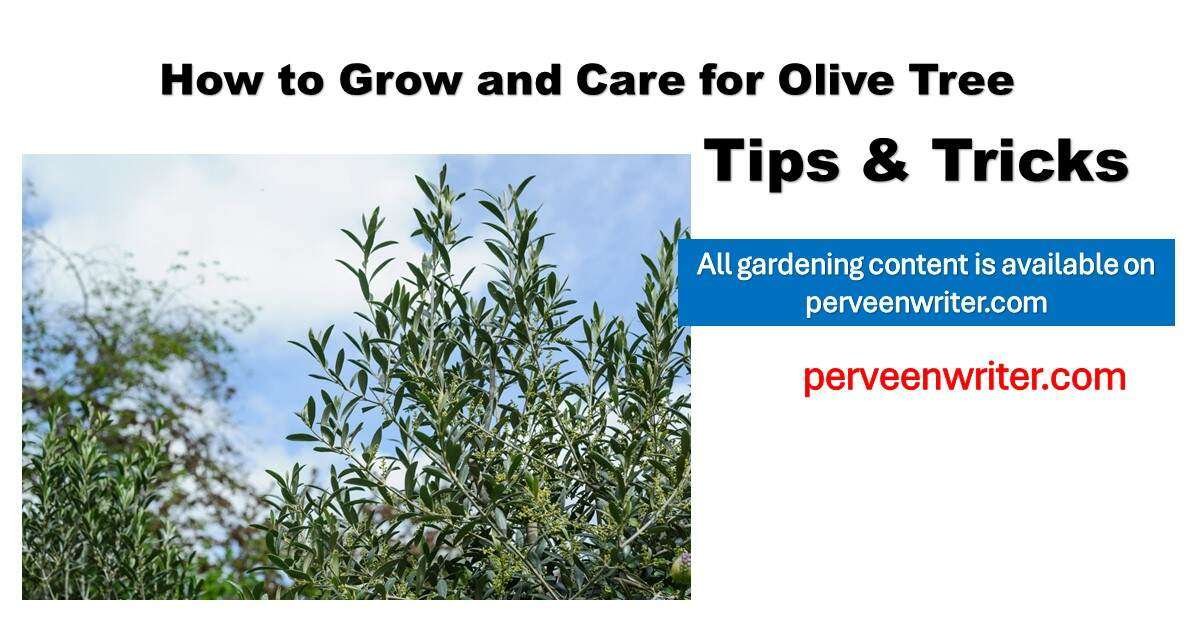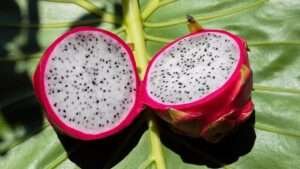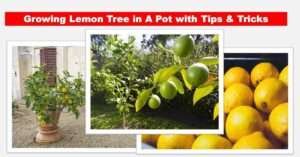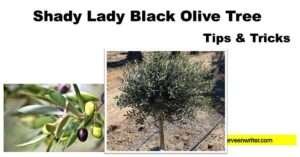This guide will discuss growing olive trees with tips and tricks.
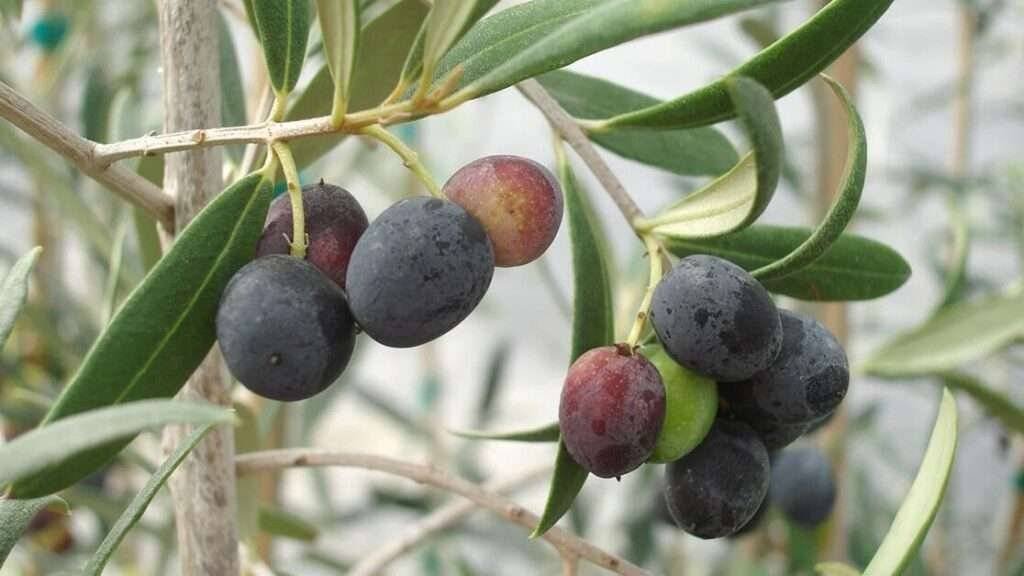
What you will read in this Blog?
ToggleIntroduction to Growing Olive Tree
A magnificent feature of the Greek environment, the olive tree, or Olea europaea, stands for quality of life, purity, and peace. This hardy tree, native to Greece, Italy, Spain, and the Middle East, flourishes in the hot, dry climate of the Mediterranean region.
The olive tree is valued not only for its longevity (some specimens can live for decades) but also for the fruit it produces—olives—and the nutrient-dense oil that can be made from them. Growing olive tree is very beneficial for any trader. Growing olive tree is very beneficial for us.
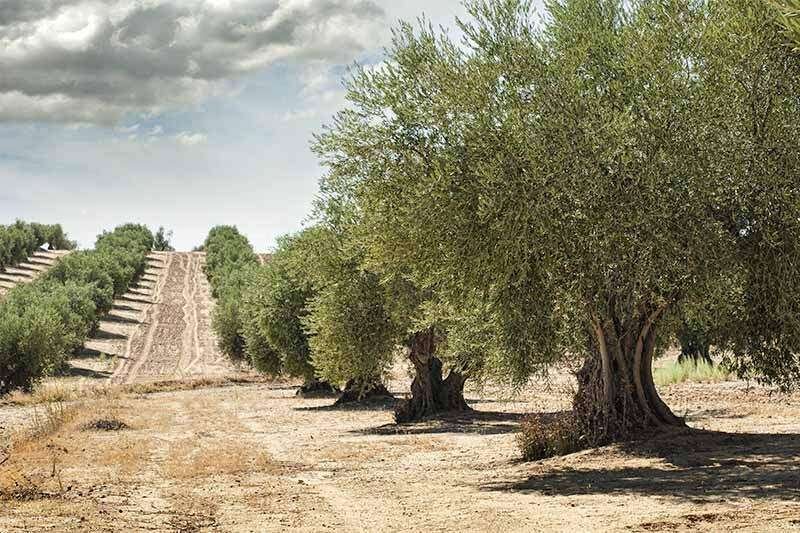
Growing Olive trees and their products’ principal uses
Olives and their oil are essential to Mediterranean cooking, valued for their unique flavor and nutritional value. Olive oil is integral to a heart-healthy diet since it is high in vitamins, antioxidants, and heart-healthy fats. Besides its culinary use, olive oil is used for pharmaceuticals and as a fuel source for conventional oil lamps. Growing olive tree is very beneficial for us.
But growing olive trees are more interesting than just their edible parts. It piques the interest of many enthusiasts and gardeners to develop their olive trees, either from seed or cuttings. Here’s how to handle it on your own:

Growing Olive Tree From Cuttings
Cuttings: Select 6-8 inches long healthy, semi-hardwood cuttings in early summer from the current year’s growth. These should not show any evidence of sickness or stress. Growing olive tree is not an easy work.
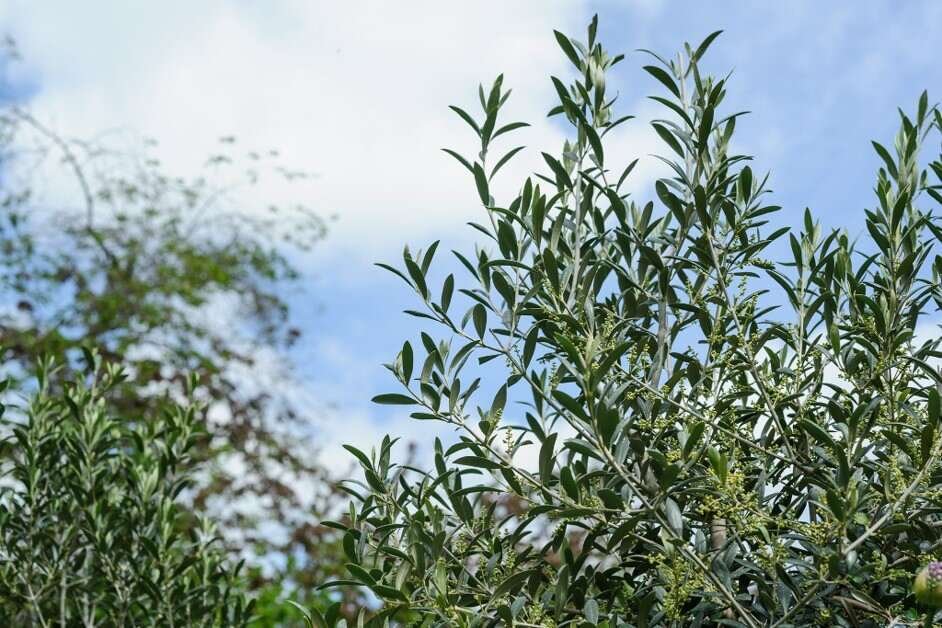
Preparation: Remove the leaves from the bottom half of each cutting, leaving two or three pairs on top. This helps to direct the cutting’s energy towards root development. Growing olive tree is very beneficial for us. Growing olive tree is a business that gives money.
Dip the cut end in a rooting hormone to increase your chances of success. This phase is essential for promoting root growth.
Planting: Place the prepared cutting in a well-drained mix, such as sand and peat. To avoid overwatering, ensure that the container has sufficient drainage.
Maintain regular moisture in the soil and avoid waterlogging. Provide the cuttings with indirect sunshine and avoid severe temperatures. If you maintain moisture while growing olive tree then you will must get profit.
The rooting process might take between 6 and 12 months. You can transplant the cutting to its final place once it has formed a healthy root system.
To grow an olive tree from seed, immerse the seeds in water for 24 hours to soften the outer layer and improve germination rates.
Sowing: Place the seeds approximately an inch deep in a well-drained soil mix and lightly cover. A tiny pot or seed tray is ideal for this purpose.
Watering: Keep the soil moist but not too saturated, hindering germination.
Place your pots in a warm and bright-light location. Olive seeds grow best at 70-85°F (21-29°C). Growing olive trees is very cruicial.
Patience is key. Germination can be a protracted process, ranging from 6 weeks to 6 months. Continue to care for your seeds at this time.
Transplanting: Once seedlings have developed a robust root system and a few sets of genuine leaves, they can be moved into a larger container or the garden.
Growing olive trees from cuttings or seeds demands time and effort. However, the result of increasing your olives or making a beautiful decorative is well worth the work. Growing olive tree is very difficult.
FAQs about Growing Olive Tree
How Long Does It Take to Grow Olive Trees?
The olive tree (Olea europaea) grows slowly to moderately, focusing much of its energy on creating a strong root system and trunk in its early years. Typically, an olive tree will begin to give fruit three to six years after planting. However, it can take between 5 and 12 years for the trees to begin producing olives in commercially feasible quantities. Growing olive tree is tricky.
These long-lived trees can continue to produce olives for hundreds of years, making the initial wait worthwhile for those who want to cultivate these symbols of peace and prosperity. Growing olive tree is not everybody work.
Is Growing Olive Tree Possible in Pakistan?
Growing olives (Olea europaea) in Pakistan is certainly viable. The weather conditions in various sections of the country are ideal for olive growth. Olive trees thrive in locations with a Mediterranean-like environment characterized by moderate, wet winters and hot, dry summers. Growing olive tree is a business.
Parts of Khyber Pakhtunkhwa (KP), Balochistan, and Punjab provinces have been recognized as appropriate for olive production. Pakistan’s government and agricultural institutes are also promoting olive tree cultivation as part of attempts to increase edible oil production and minimize reliance on imports.
With careful care, the right types, and adherence to agronomic standards, olive production in Pakistan may thrive, benefiting both local economies and the environment. Growing olive tree is very hardworking work.
Where do olive trees grow best?
Olive trees (Olea europaea) thrive in areas with a Mediterranean climate, which features moderate, wet winters and scorching, dry summers. These robust trees are native to the Mediterranean Basin and flourish in conditions of long, sun-drenched summers, which are essential for fruit growth.
Olive trees are prone to frost damage, especially during their formative years. Therefore, optimal development and fruit production occur in places where temperatures rarely drop below freezing throughout the winter. These trees thrive in well-drained soil, which ranges from sandy loam to clay and has a pH of neutral to slightly alkaline.
Does Growing olive tree like the sun?
Olive trees (Olea europaea) flourish in sunlight-rich areas. They are sun-loving species that need at least six hours of direct sunshine per day to thrive and produce fruit. Olive trees are well-suited to Mediterranean climes, allowing them to tolerate hot, dry summers while maximizing photosynthesis with full sunlight.
This requirement makes them perfect for planting in sunny areas of gardens or landscapes, where less sun-tolerant plants may suffer. Proper sunshine exposure is critical not just for growth but also for maximizing olive yield, highlighting the need for a sunny position for these trees.
How do I keep my growing olive tree happy?
To ensure that your olive tree (Olea europaea) grows, provide it with the proper circumstances. Olive trees demand well-drained soil, direct sunlight, and frequent, thorough watering sessions that replicate their natural Mediterranean environment. During the growing season, water your olive tree deeply but infrequently to promote robust root growth, allowing the soil to dry slightly in between soaking.
Fertilize with a balanced, slow-release fertilizer in early spring and again in midsummer to promote healthy growth and fruit output. Pruning is also necessary; do it in late winter or early spring to remove dead or overloaded branches, which improves ventilation and light penetration in the canopy.
Finally, keep your olive tree out of excessive cold, as temperatures below 20°F (-6°C) can cause damage. A happy olive tree receives the care it requires to imitate its natural habitat as closely as possible.
What type of soil is best for growing olive tree?
Olive trees thrive on well-drained soil that allows their roots to breathe and water to move freely without pooling. The optimal soil type for olive trees is sandy loam, which contains a balanced mix of sand, silt, and clay, giving adequate aeration and drainage while keeping enough moisture and nutrients to promote tree growth.
However, these trees are incredibly flexible, with the ability to survive a wide range of soil conditions, from clay to rocky foundations. Despite their versatility, olive trees require a soil pH of 6.0 to 8.0 to develop optimally.
In addition to soil requirements, climate has a significant impact on olive tree growth and fruit output. Olive trees flourish in Mediterranean-type regions with warm winters, scorching summers, and moderate humidity. These conditions support optimal photosynthesis, allowing the tree to produce an abundance of fruit.
What fertilizer do olive trees need?
Olive trees (Olea europaea) thrive when given the proper nutritional balance, which necessitates the use of a fertilizer that contains a suitable blend of nutrients. A well-balanced, slow-release fertilizer with an NPK (Nitrogen, Phosphorus, Potassium) ratio of 10-10-10 or 20-20-20 is good for promoting olive tree health and productivity.
Nitrogen encourages healthy leaf growth, phosphorus aids in the development of roots and flowers, and potassium improves fruit quality. Furthermore, integrating organic matter, such as compost, helps increase soil structure and fertility, which benefits the olive tree even more. Fertilizer should be applied in late winter or early spring, just before the tree emerges from hibernation, and again in late spring to promote flowering and fruit production.
Fertilizing Techniques for Olives
Soil fertility, tree age, and weather all influence fertilizer use for olive trees. Here are some methods to consider while fertilizing your olive tree:
Top Dressing
This procedure entails uniformly applying the fertilizer around the tree’s base while avoiding direct contact with the trunk. It is best.
Is banana water good for olive trees?
Banana water can benefit olive trees by providing critical nutrients naturally and effectively. Bananas are high in potassium, which is an essential nutrient for olive trees to produce healthy fruit. Soaking banana peels in water produces a potassium-rich solution that can assist in improving the tree’s fruit quality and resilience to illnesses.
When used in conjunction with typical fertilization methods, this product not only adds nutrients but also supports environmentally friendly agricultural practices. To maintain the olive tree’s best growth and productivity, use banana water sparingly and as part of a comprehensive care strategy that includes balanced fertilizer, correct irrigation, and disease treatment.
In addition to correct feeding, pruning is essential for an olive tree’s health and shape. Pruning improves air circulation and sunshine penetration, which helps to prevent illnesses and increase fruit output. An olive tree should be pruned once a year during its dormant season, immediately following harvest. The optimal shape for an olive tree is a vase-like structure with an open centre, which allows
What is the best food for olive trees?
The ideal diet for olive trees is a slow-release, balanced fertilizer with an NPK ratio of 10-10-10 or 20-20-20, supplemented with organic matter. This specialized nutrient blend guarantees that the tree gets enough nitrogen for leaf development, phosphorus for root and flower growth, and potassium to increase fruit quality.
Furthermore, replenishing the soil with organic matter, such as compost, improves soil structure and fertility while also promoting a healthy environment for olive tree growth. For the best results, apply this nutritional regimen strategically in late winter or early spring to energize the tree before the growing season, then again in late spring to boost flowering and fruiting processes.
Furthermore, regular soil testing is required to check the nutrient levels and pH balance of the soil. Olive trees require a slightly acidic pH range of 6.0-7.0 to aid in nutrient absorption and prevent iron deficiency. To maintain the appropriate pH balance, modify as needed by adding sulfur or lime.
Is cow manure good for olive trees?
Cow manure can be an effective organic fertilizer for olive trees, delivering a high concentration of nutrients that can improve soil fertility and tree health. When properly composted, cow manure releases nitrogen, phosphorous, and potassium, which are vital elements for olive tree growth and fruit production. Furthermore, the organic matter in cow dung improves soil structure, boosting water retention and aeration capacity.
However, it is critical to utilize well-composted manure to avoid introducing pathogens into the soil and prevent nitrogen burn, which can occur with raw manure. Incorporating composted cow manure into the soil surrounding olive trees helps create a more sustainable and ecologically friendly way to keep them healthy and productive.
Finally, adequate fertilization is critical to the growth and productivity of olive trees. A well-balanced, slow-release fertilizer with an NPK ratio of 10-10-10 or 20-20-20, mixed with organic matter, can offer the nutrients required for good tree health. Regular soil testing and pH changes are also important in maintaining a
Is tomato feed good for olive trees?
While tomato feed is high in potassium, which promotes fruiting in tomato plants, it is not the best choice for olive trees. Tomato feeds have a higher potassium ratio and may not supply the balanced nutritional profile that olive trees require for optimal health and productivity. As previously stated, olive trees require a balanced NPK ratio to promote leaf growth and root development in addition to fruiting.
Using a specific olive tree fertilizer with a balanced NPK ratio of 10-10-10 or 20-20-20, as well as the addition of organic matter for soil health, is significantly more advantageous. Furthermore, olive trees’ unique nutrient requirements might vary depending on soil conditions, making regular soil tests and specialized fertilization more successful than using a general-purpose feed such as tomato fertilizer.
In conclusion, understanding olive trees’ nutritional requirements is critical for their general health and productivity. A balanced fertilizer with an NPK ratio of 10-10-10 or 20-20-20, loaded with organic matter, and applied strategically throughout the growing season can assure optimal development and fruiting. Regular soil testing and pH changes are also required to sustain
How do you thicken an olive tree?
A variety of cultural methods can be used to thicken an olive tree and promote vigorous trunk growth. To begin, correct pruning is essential; by removing extraneous branches, the tree may focus its energy on the growth of the main trunk and principal branches, resulting in enhanced thickness. Prune in late winter or early spring.
Additionally, keeping the olive tree well-watered, particularly throughout the dry season, promotes steady development. However, it is vital to avoid overwatering, as olive trees thrive in conditions similar to their natural Mediterranean climate. As previously stated, regular application of the appropriate fertilizer plays an important role in enabling not only healthy growth but also the thickening of the tree’s trunk over time.
Finally, giving the tree enough space to grow without competition from other plants or trees will promote trunk development. These activities can help an olive tree grow a strong, thick trunk, which is indicative of a healthy and fruitful tree.
How do you multiply olive trees?
A variety of cultural methods can be used to thicken an olive tree and promote vigorous trunk growth. To begin, correct pruning is essential; by removing extraneous branches, the tree may focus its energy on the growth of the main trunk and principal branches, resulting in enhanced thickness.
Prune in late winter or early spring. Keeping the olive tree well-watered, particularly throughout the dry season, also promotes steady development. However, it is vital to avoid overwatering, as olive trees thrive in conditions similar to their natural Mediterranean climate.
As previously stated, regular application of the appropriate fertilizer plays an important role in enabling healthy growth and the thickening of the tree’s trunk over time. Finally, giving the tree enough space to grow without competition from other plants or trees will promote trunk development. These activities can help an olive tree grow a strong, thick trunk, indicative of a healthy and fruitful tree.
How do I shape The olive tree I am growing?
Shaping an olive tree is critical for fostering healthy development, increasing fruit yield, and maintaining the tree’s structural integrity. The optimal time to prune an olive tree is in late winter or early spring, just before new growth begins but after frost has passed. This timing helps the tree to repair quickly while preventing cold damage to new cuts.
First, remove any dead, diseased, or damaged branches to keep the tree healthy. Next, thin the interior branches to improve air circulation and sunlight penetration throughout the canopy, which is critical for fruit development. By strategically cutting branches, you can achieve an open, vase-like shape while also fostering the growth of a powerful core leader and several strong lateral branches. Growing olive tree is very beneficial for us.
Avoid extensive pruning in a single year; instead, aim for gradual shape over several years to avoid stunning the tree and reducing fruit yield. Make clean, angled cuts immediately above a bud or branch to encourage healthy regrowth. Regular pruning and shaping can improve the general health and beauty of your olive tree and help produce a larger harvest. Growing olive trees is very beneficial for us.
What is a Fake Olive Tree?
Unlike its natural counterpart, a fake olive tree is an artificial fabrication that resembles a real olive tree (Olea europaea). These fake trees are frequently created from synthetic materials such as plastic, silk, or polyester for the leaves, and genuine wood is sometimes used for the trunk and branches to add realism.
Fake olive trees are popular in interior design and landscaping where actual trees are impractical to maintain or where climatic circumstances do not allow true olive trees to thrive. They add visual appeal without requiring watering, sunlight, or soil, making them a practical and long-lasting ornamental alternative for indoor and outdoor environments.
The greatest soil for growth
What is a Large Fake Olive Tree?
A huge synthetic olive tree can be used as a central or focal point in various design schemes, providing the grandeur and presence of a mature olive tree without the significant maintenance that real trees demand. These artificial giants, designed for longevity and visual impact, are ideal for large rooms, atriums, or outdoor places where filling enormous spaces with greenery might be difficult.
They have lush, lifelike foliage and solid trunks that impressively reproduce the look and feel of their original counterparts. Large imitation olive trees are ideal for places that want to create a Mediterranean or Tuscan ambiance. They provide an everlasting green without the need for natural light, constant maintenance, or weather considerations.
How do olive tree branches look?
Artificial imitations of the natural branches found on olive trees and fake olive tree branches are made to resemble the look and feel of genuine olive leaves and fruit. The materials used to create these imitation branches include silk, plastic, and other synthetic fibers, which give them a realistic appearance and feel.
In environments where it can be impractical to keep genuine plants due to light, climate, or maintenance requirements, they are frequently utilized as interior décor. Additionally, since they provide everlasting beauty without the risk of wilting or seasonal availability, artificial olive branches are popular in floral arrangements and event decorations.
How do olive tree branches look?
Artificial imitations of the natural branches found on olive trees and fake olive tree branches are made to resemble the look and feel of genuine olive leaves and fruit. The materials used to create these imitation branches include silk, plastic, and other synthetic fibers, which give them a realistic appearance and feel.
In environments where it can be impractical to keep genuine plants due to light, climate, or maintenance requirements, they are frequently utilized as interior décor. Additionally, since they provide everlasting beauty without the risk of wilting or seasonal availability, artificial olive branches are popular in floral arrangements and event decorations.
Growing olive tree is tricky; you must know how to grow it. This growing olive tree can give you a lot of profit if you work harder.
